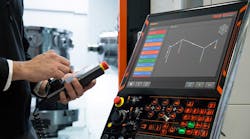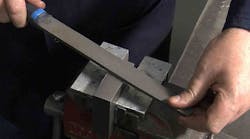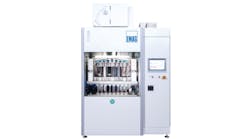The reliability of machinery and hardware is central to smooth operations in manufacturing and product development. Disparate-design systems are common, and in fact necessary for individual shops and organizations to execute their various production programs, delivering parts and components that generate income and fuel the business.
When something happens to interrupt the performance of this machinery the disruption can be significant, not the least of which is a decrease in total output. To make matters worse, many manufacturing systems and devices are custom-developed, so they’re expensive to replace or repair. Also, as with more expensive machinery, a plant may have only one model or a few spares, which can set back operations that much more during an outage.
So, to mitigate these developments it’s best to conduct preventive and regular maintenance to ensure equipment remains in tip-top shape. In fact, a business can save anywhere from 12 to 18% in total maintenance costs by investing in proactive maintenance measures, as opposed to reactive ones.
That said, it may not be immediately apparent what “preventive maintenance” entails, especially regarding CNC machines. Here are some tips on how to apply preventive maintenance throughout a shop or plant to achieve ideal uptime for CNC machines.
1. Schedule maintenance around equipment needs
Certain CNC machines and advanced tools will prompt team members to conduct various forms of maintenance or servicing. That is a last resort, however, to make sure the equipment is getting serviced as necessary. Do not wait for this to happen.
Instead, schedule regular maintenance sessions so it happens in advance of any problem, and that it occurs at times when it will not interrupt production. Furthermore, base your maintenance schedules on the usage patterns of the equipment. You don’t use some hardware as much as others, which means you don’t need to conduct regular maintenance as often. But for equipment you use hundreds of times every day, every day, it’s vital to schedule ongoing maintenance far in advance.
You also must remember to work around your maintenance crews. For instance, some plants outsource the maintenance team, as opposed to having in-house engineers. If this is the case for your systems, you’ll want to ensure you schedule according to availability.
2. Establish an employee check system
It’s unrealistic to expect plant managers to identify or remain aware of machinery conditions on top of all their other responsibilities. In fact, that’s exactly why automated tools and sensors exist: to inform the necessary parties when something requires action.
However, it’s likely the employees working with said equipment have a good understanding of their conditions and performance. Therefore, it’s necessary to establish a system by which employees can approach the necessary managers and highlight maintenance requirements. For example, maybe a system is running slower than it used to: The worker needs a proper channel to share this information and secure a scheduled maintenance call.
3. Source or stock spare parts before they are necessary
CNC machines and larger systems can be finicky, to the point where individual components can break down or malfunction — chip conveyors break, coolant systems malfunction, nozzles clog up, fixtures slowly fall out of alignment. Because these components often have custom designs, it’s necessary to keep a small stock of replacement parts somewhere on location.
Taking that a step further, you need to ensure the parts are available, locally, before something occurs. With something like circular knives, for example — especially when dealing with unique designs — you’ll want spare parts to make a swap as soon as the blades are dull.
Having spare supplies will certainly cut down on the possibility of extended failure, which could occur while waiting for replacement parts to ship to the affected plant. In addition, an aspect of preventive maintenance is to ensure equipment is always running smoothly, which may require part or component swaps at unexpected moments.
4. Maintain documentation
Every time a piece of equipment on the plant floor gets serviced, replaced, or even just looked at, make sure you document the event and status. It’s also a good idea to ask service technicians or engineers to document their findings and any solutions they put in place.
Documentation does several different things for you and your team. For starters, it establishes a baseline of regular events your employees may reference during their service checks. They know what malfunctions or occurs regularly and will be better able to identify ways to prevent this.
Second, it serves as a checklist for the manufacturer of said equipment, which you can share with them during future dealings. It may even help them develop more reliable, accurate equipment which you can roll out to your plant in the future.
Finally, it allows you to assess the true value of the equipment and hardware in use. If a piece of technology is failing regularly, regardless of consistent maintenance schedules, it’s necessary to find a suitable replacement or entirely new system.
5. Don’t be averse to retiring old equipment
Sometimes, no matter how much you fight it, it’s just time to retire or phase-out old equipment and systems. Like it or not, manufacturing facilities and modern plants should be in a perpetual state of revision, where old equipment gets taken out of the equation and new hardware rotates in.
This puts the onus on analysts to constantly assess performance, value and reliability for existing equipment they could easily swap out for something more ideal. Make certain you have a system in place to facilitate this, and that you also have proper communication channels open, just like you do for your workers operating the machinery.
Keep production steady — On average, businesses spend about 80% of their time reacting to maintenance issues rather than preventing them, which can certainly derail performance and reliability. Naturally, that’s why preventive maintenance is something you should have either in place already or plan to deploy soon.
The tips discussed here should help you set up an environment of consistent and reliable servicing, which will result in higher output, steady production schedules, and more efficiency all around. What more could you ask for?
Megan Nichols is an amateur astronomer and environmentalist, and a writer on a wide range of scientific topics. Her recent contributions to AmericanMachinist.com, have included Understanding PTFE, and How to Use It and 6 Reasons Your Shop Needs a 3D Printer. Follow Megan on Twitter @nicholsrmegan.








